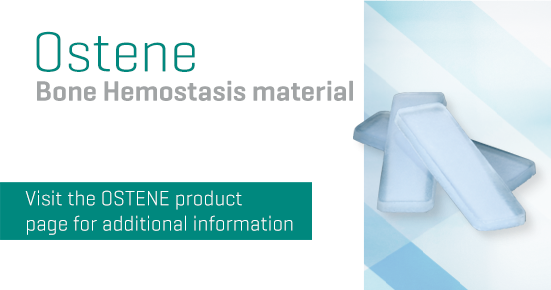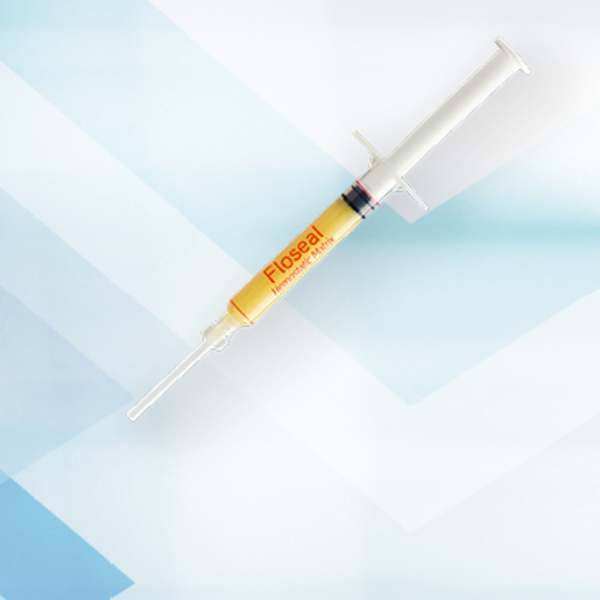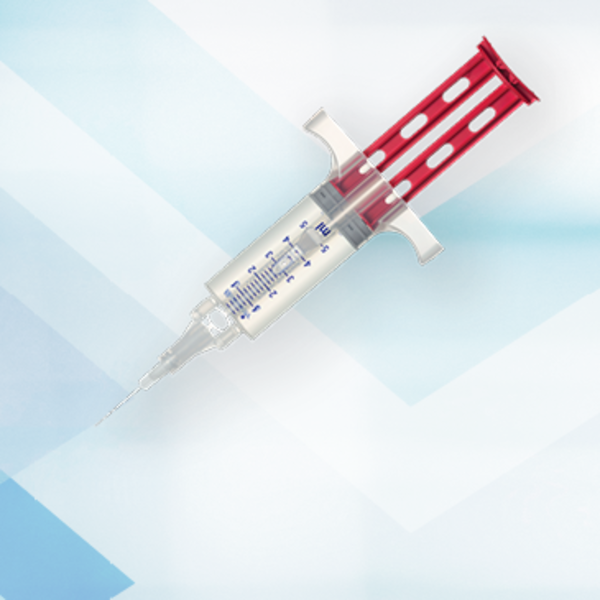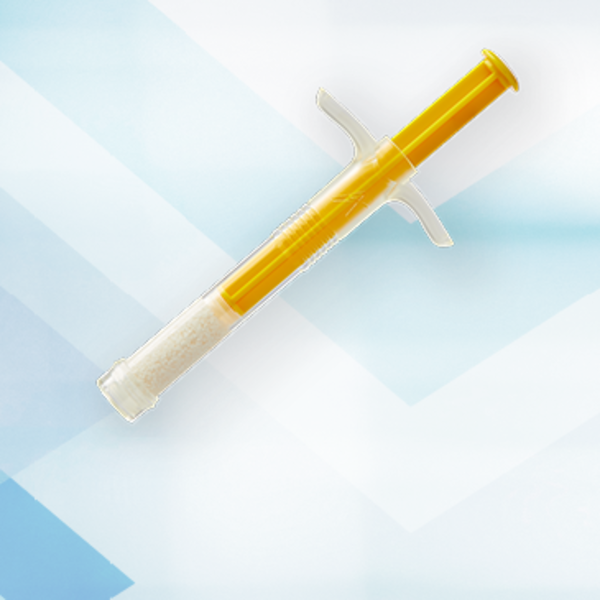Spinal Surgery
Bleeding during spine surgery can significantly impair a surgeon’s visual field and lead to increased operating room time. Baxter's portfolio of hemostat, sealant and tissue repair products reduce bleeding and increase access by supporting surgical teams who improve patient mobility and quality of life.
Each spine procedure provides unique challenges that can cause complications for the healing process. Here are a few examples.
Anterior Cervical Discectomy and Fusion (ACDF)
In ACDF surgeries, hemostats minimize blood loss and help to ease surgical complexities. FLOSEAL, Baxter's flowable hemostat, provides effective, fast hemostasis (90 seconds median time to hemostasis)1 to improve visibility and overall outcomes2.

Posterolateral Spinal Fusion (PLF)
During this common spine procedure, surgical teams rely on hemostats and orthobiologics to manage blood loss and promote bone growth. INDUCTIGRAFT, Baxter's bioactive bone graft substitute, offers enhanced porosity and performance to achieve optimal fusion rates3,4,5*.
*Preclinical data. Results may not correlate to performance in humans

Transforaminal Interbody Fusion (TLIF)
In another common spine surgery, Baxter's bone hemostasis material, OSTENE, provides immediate bone hemostasis. This water-soluble polymer does not require removal and dissolves within 48 hours. It can be used on all bleeding bone surfaces, including areas where bone fusion is critical6,7,8,9*.
*Preclinical data. Results may not correlate to performance in humans
Portfolio of Products
Indications and Important Risk Information
Floseal Hemostatic Matrix Indication
FLOSEAL is indicated in surgical procedures as an adjunct to hemostasis when control of bleeding, ranging from oozing to spurting, by ligature or conventional procedures is ineffective or impractical.
Contraindications
Do not use FLOSEAL in patients with known allergies to materials of bovine origin.
Warnings
Do not inject or compress FLOSEAL into blood vessels.
Do not apply FLOSEAL in the absence of active blood flow, e.g., while the vessel is clamped or bypassed. Extensive intravascular clotting and even death may result.
FLOSEAL is not intended as a substitute for meticulous surgical technique and the proper application of ligatures or other conventional procedures for hemostasis.
FLOSEAL is not intended to be used as a prophylactic hemostatic agent to prevent postoperative bleeding.
Excess FLOSEAL Matrix (material not incorporated in the hemostatic clot) should always be removed by gentle irrigation from the site of application. Meticulous irrigation is required when used in, around, or in proximity to foramina in bone, areas of bony confine, the spinal cord, the brain and/or cranial nerves.
As with any implantable material, the use of FLOSEAL is not recommended in the presence of an active infection.
FLOSEAL should be used with caution in contaminated areas of the body. If signs of infection or abscess develop where FLOSEAL has been applied, re-operation may be necessary in order to remove the infected material and allow drainage.
Regardless of the type of surgical procedure, surgeons should consider the maximum swell volume of FLOSEAL, which is between 10 – 20%, after product is applied to source of bleeding and its potential effect on the surrounding anatomic areas. Maximum swell volume is achieved within about 10 minutes.
The safety and effectiveness of FLOSEAL for use in ophthalmic procedures has not been established.
FLOSEAL should not be used for controlling intrauterine post-partum bleeding or menorrhagia.
The safety and effectiveness of FLOSEAL has not been established in children and pregnant women.
Do not use FLOSEAL in the closure of skin incisions because it may interfere with the healing of the skin edges due to mechanical interposition of gelatin. The safety and effectiveness of the use of FLOSEAL Matrix as a carrier for antibiotic solutions or powders has not been established.
For safe and proper use of this device, please refer to the Instructions for Use.
CE0123
INDUCTIGRAFT INDICATIONS FOR USE
- Bone graft substitutes are intended to be used in place of corticocancellous, or cancellous allograft or autograft bone.
- The mechanical environment for such uses experience either low load requirements or compression.
Typical surgical applications for bone graft substitutes are:
- Spinal fusion, where pedicle screw fixation or an interbody cage device is used to relieve the graft site from physiological loads,
- Small void filling, e.g. after removal of a small bone tumour or following bone fracture reduction or in osteotomies, plastic surgery and dental applications.
- It is not intended to be used in place of cortical strut allograft bone where high tensile, torsion and/or bending strength are required. The products are used by surgeons in place of allograft bone (bone from humans stored in bone banks).
RISKS AND WARNINGS
INDUCTIGRAFT should not be used where it could be subject to tension, torsion, compression, shear or bending. A conventional implant (e.g. screw, rod) can protect the graft from such loading actions.
- INDUCTIGRAFT should not be used in volumetrically unconstrained sites (so the graft material cannot move or escape)
Do not overfill or attempt to pressurize the bony defect site, as this may lead to extrusion of the product beyond the site of its intended application and damage to the surrounding tissues, or may lead to fat embolization or embolization of the product into the bloodstream.
- Patient metabolism may compromise bony regeneration
CONTRAINDICATIONS
- Impaction grafting for failed total hip or knee arthroplasty
- Direct load bearing of graft material i.e. In the absence of conventional implants, such as screws and rods
- Infection
- Inability to cover or deliberate non-coverage of graft site using soft tissue
- Avascular or compromised vascular network sites
- Avoid use in patients where in the surgeon’s opinion patient lifestyle, compliance and/or physical attributes would compromise clinical outcome
- Medication which could slow bone healing
CE 0086




